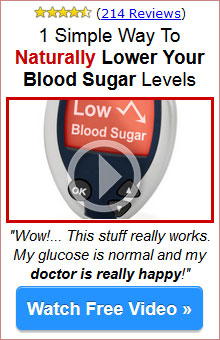What Does Hyperglycemia Mean
Hyperglycemia caused by the buildup of glucose in the bloodstream.
The two emergency conditions related to high blood sugar are ketoacidosis and hyperosmolar nonketotic coma. Ketoacidosis is more commonly associated with Type 1 diabetes, and hyperosmolar nonketotic coma occurs more commonly in older people with Type 2 diabetes. Hyperosmolar nonketotic coma can occur when blood sugar levels are high over a prolonged period. Ketoacidosis can occur when the body must break down fats for energy because of a lack of insulin. As a result, poisonous acids called ketones are formed. Both conditions can develop gradually, but are serious, life-threatening emergencies requiring medical treatment.
The symptoms of hyperglycemia are the same as for untreated diabetes. A number of factors can cause high blood sugar, including eating too much, taking too little insulin, skipping your diabetes medication, other medications, or inactivity. Having an infection or being sick or under stress can also cause blood sugar to rise. When you are sick, it?s important to continue taking insulin even if you have trouble eating. Ask your doctor how to handle sick days.
Ketones are excreted in the urine, and special kits are available to test the urine for ketones. Check your urine for ketones if your blood sugar is consistently over 240 and doesn't come down. Call your doctor whenever your urine tests positive for ketones or if your blood sugar is over 300.
Warning Signs of High Blood Sugar :
Slow Onset Warning Signs:
• Extreme thirst
• Frequent urination
• Drowsiness, lethargy
• Sugar in urine
• Dry, hot skin
• Lack of appetite
• High levels of ketones in urine
• Rapid pulse rate
• Fruity, sweet, or wine-like odor on breath
• Heavy, labored breathing
• Stupor, unconsciousness
Treatment: Call a doctor immediately. Drink fluids WITHOUT SUGAR, if able to swallow, to prevent dehydration.

Prevention
Be Aware
Typical causes of hypoglycemia are too little food, eating off schedule, skipping a meal, excessive or unanticipated exercise, and too much insulin. Being aware of such factors and avoiding them can avert an emergency situation.
Self-Monitoring of Blood Glucose
Test your blood sugar often, especially if you have frequent insulin reactions or if your blood sugars are unexpectedly high. If you have high blood sugar in the morning, you may need to test in the middle of the night in order to adjust insulin.
Tell your health care professional if you experience frequent insulin reactions or high blood sugars.
When You Exercise
Insulin works more efficiently when you exercise, which may result in blood sugar that is too low. To prepare for exercise, eat a slowly absorbed snack such as a cheese or meat sandwich. For every 30 minutes of anticipated exercise, eat 15 grams of carbohydrates to cover the increased activity.
Insulin is released more quickly if it is injected into the arm or leg being exercised. If you are going to exercise using your legs primarily (i.e., jogging), don't inject into your thigh. Choose the arm or abdomen instead.
Be Prepared
• Diabetic emergencies can arise at any time.
• Always carry a source of fast-acting sugar.
• Always carry or wear a form of medical identification, such as Medic Alert, indicating that you have diabetes, what medication you are taking, and the name of your health care provider.
• Always test blood sugar before driving or operating heavy machinery.
• Tell all teachers, family members, caretakers, co-workers, etc. about insulin reactions and their treatment.
Awareness of and prompt attention to the warning signs of low or high blood sugar can avoid a more serious problem.

The information provided here is not intended to take the place of medical advice. For guidance on topics discussed, consult your health care professional.
Source: Juvenile Diabetes Research Foundation; 7100 Woodbine Ave., Suite 311; Markham, Ontario; L3R 5J2
Freebies & Discount Codes
Find out freebies and coupons for savings on health products available on the Web











